Do you provide your customers with a way to interact with each other and find helpful insights? Whether you offer an “official” branded community, or your customers are actively seeking information on your company and products via forums like reddit or Quora, your customers know that often the best source of information is another user. When it comes to complex technology solutions, nothing compares to peer-to-peer insights and perspectives.
Your customers want to maximize the value of the technology or software that they’ve purchased from you, and they expect their suppliers and partners to take a very active role in helping them succeed. A community – one that includes your own branded knowledge base, plus peer-to-peer insights and the chance to ask questions of a wide community of experts – is by far the most powerful and effective way to help your customers succeed with your solutions.
So from your customers’ point of view, the benefits of interacting with other users, and being part of an online community, are clear. But what’s the ROI for tech companies when it comes to developing, launching and managing an online community? Is it worth the time and resources to take the lead role, and “own” your customer community?
Beyond helping your customers to succeed, there are lots of other business reasons to develop a community:
- Offer a competitive differentiator.
An active community is a strong selling point. It shows that your users are enthusiastic and engaged, and it showcases your commitment to your customers and thought leadership. Your prospects want to know how your organization will help them to succeed, and a strong, active community is proof that your company has the ability and commitment to do so.
- Streamline your support services.
A community makes it easier for your users to find information, and get fast answers to questions. A self-service support model that allows users to quickly find the information they need (either in your knowledge base or by asking other users), can save time and costs. Users don’t always want to make a call, or send an email to get help. They want a quick and easy way to access the knowledge they need. (And it can save your company money – some organizations have used their communities to reduce support costs by as much as 40%.)
- Find influencers and brand ambassadors.
You’ll find your most enthusiastic customers easily in your community, and you’ll see what they’re most passionate about. The next step is to invite them to participate in your referral marketing programs. (You’ll also be able to easily find – and respond to – your most vocal detractors.)
- Strengthen customer engagement and retention.
In B2B, identifying with a “tribe” is often tied to a specific solution, meaning that once a contract is signed, you don’t have to compete for tribe members. But you do have to strengthen tribe engagement. You can build engagement by encouraging participation in an active online community, which helps customers maximize their investment in your solution. In turn, a strong community makes your offering more valuable – it’s a loop that keeps on expanding in value, both for your users and your company.
- Refine products, and find new product ideas.
Your community can serve as your very own focus group. You can float a brand-new product idea, or simply monitor the conversation to see what product attributes need tweaking. Your community is your window into the pain points, ambitions and motivations of your users.
Getting started
Before you decide to introduce a community, do some research to see how your users have been managing without you. Is there a community that already exists? I.e. is there a LinkedIn group, a Facebook group, or an in-person user group, that covers a lot of what your online community would do? If something has been set up already, figure out how you will integrate your community with the existing version. And find out what sort of communities your competitors are offering. Are you already losing customers because your competitors can offer a strong community as a competitive advantage?
Lastly, consider whether you are truly in a position to commit to developing a community. It’s a long-term project that will require resources and active management long into the future. The worst thing you can do is to launch a community and then abandon it. There is nothing worse than a forum or website where the posts are all several years old, and that has clearly been forgotten by the owner. If you’re not sure that you can commit to developing a community, then consider sponsoring a third-party forum or group.
In our next blog post, we explore the specifics of managing a community, including some of the different platforms and approaches that you can use. If you’d like to learn more about how a community can help you support your customers, and strengthen your customer engagement, contact info@livingstone.eu



